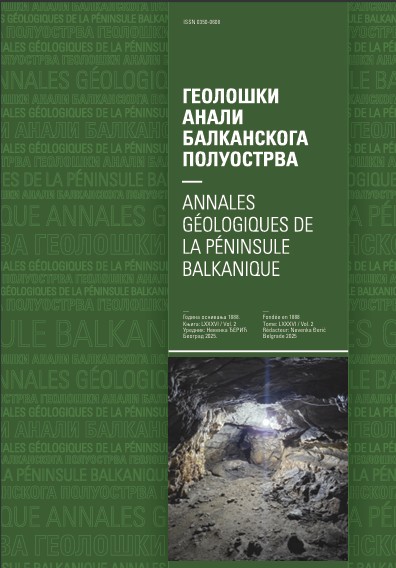New data on the geology of the archaeological site at Vinča (Belgrade, Serbia)
Abstract
Landslides threaten Vinča, a world famous archaeological site of Neolithic culture. For this reason, a field investigation and geologic-geotechnical research of the cores of seven exploration boreholes were carried out. Avery interesting structural setting was identified. The oldest stratigraphic unit consists of Middle Miocene Sarmatian sediments, which were discovered along the right bank of Danube River and within its riverbed about 300 m upstream from the archaeological site. These Sarmatian strata give evidence that the Danube River eroded the right bank. In addition, within its recent valley, there is a fault zone along which a block on the right bank was uplifted while a block on the left bank of the river that was subsided. All the boreholes passed through sediments of a previously unknown geological formation. It lies unconformably over Sarmatian strip marls and makes the base for Pleistocene loessoid sediments (approx. 10 m under the surface). These sediments were formed in a marsh-lake environment with a strong river influence. According to its superposition, the supposed age of this formation is the Plio-Pleistocene. Above the right bank of the Danube River, there are steep sections where Pleistocene swamp loessoid sediments were found. True loess deposits are not present here, but are in the hinterland of the right bank of the Danube River. The loess delluvium was deposited over the Pleistocene sediments. On the right bank of the Danube River, below the archaeological site, there are the anthropogenic water compacted sands that were previously incorrectly shown on geological maps as alluvial fans.
Copyright (c) 2022 Geološki anali Balkanskoga poluostrva

This work is licensed under a Creative Commons Attribution 4.0 International License.










